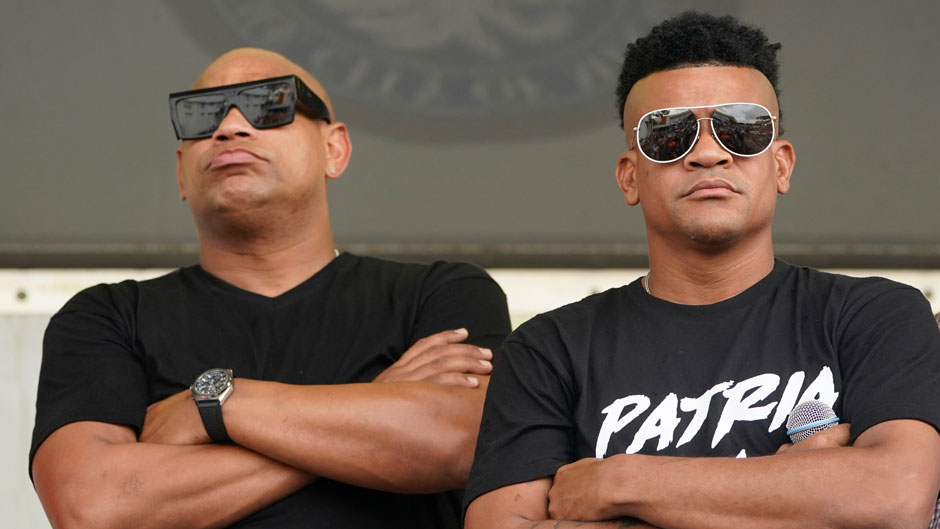After the July 11, 2021, demonstrations that rocked many cities in Cuba when hundreds of citizens took to the streets demanding food, medicines, and freedom, the song “Patria y Vida” became a battle cry and a YouTube sensation.
A play on the Cuban revolutionary phrase “Patria o Muerte” (“Fatherland or Death”), the hip-hop song asked for a change of regime in the island and was heard from Miami to Havana. It was recorded by well-known artists residing both on and off the island, who were members of the “repartero” movement—urban Black musicians who were raised in the poorest neighborhoods of Havana. The music video for “Patria y Vida” has received more than 8 million views on YouTube.
Michael Levine, a doctoral candidate of music at the University of North Carolina at Chapel Hill, wondered how the video spread so widely and reached many of his Afro-Cuban friends on the island since they did not have the means to access the internet. Black Cubans have less access to remittances or hard currency than their white fellow compatriots.
His tale of the role that “reparteros” played in distributing the video inside Cuba was one of the presentations during the first panel, “Post- Cultural Politics,” during the fourth New Directions in Cuban Studies Conference last week—hosted by the University of Miami Libraries Cuban Heritage Collection (CHC).
The three-day conference was held virtually and drew more than 50 presenters in partnership with Harvard University’s Cuba Studies Program.
“We are thrilled to welcome a broad range of experts who will discuss topics relevant to the island nation and its exile community,” Charles “Chuck” Eckman, dean of University Libraries, said during his opening remarks.
Elizabeth “Liz” Cerejido, CHC director and Esperanza Bravo de Varona Chair, also welcomed the participants.
“Since 2014, the CHC has hosted this biannual program conceived as a platform for critical thinking and the presentation of innovative scholarship in which students, junior scholars, and established academics learn from one another,” she said.
When he noticed that the song “Patria y Vida” had penetrated Cuban society, Levine said that he wondered how the song went viral since it would never be played on state owned TV or radio.
He found out that for “reparteros,” piracy operates an alternative source of power from the official means of distribution, he said. The piracy underground network known as “el paquete,” a one-terabyte collection of digital media content downloaded weekly from satellite dishes and placed on portable USB drives, is distributed by local sellers who charge the equivalent of $2 a week for the media content. The “paquete” does not need internet connections to access.
Other matrixes further curate packages for individuals, he said. For music lovers, the “paqueteros” deliver a customized “el paquete” that includes movies, video games, and soap operas. It can also include the work of local musicians. For instance, it can contain music from local “reggaetoneros” who otherwise would not have access to state-controlled television or radio where reggaeton is still perceived as controversial, according to Levine.
Young Cubans also use a platform called Zapya to exchange music, videos, and texts through Bluetooth connections, he noted. “Easy sharing of music among young Cubans allowed ‘Patria y Vida’ to become viral in Cuba,” Levine added.
Nadia Nava Contreras, a project researcher and doctoral candidate at the University of Helsinki, presented her paper, “Asi Esta Cuba Hoy: YouTubers, the Commodification of Urban Narratives and the Quest for Virtual Agency in Havana.”
She gave an overview of the growing number of young Cubans who have taken to YouTube to create videos that show the day-to-day lives of regular Cubans.
The YouTubers in Cuba must secure someone outside the island to set up and manage their accounts because of U.S. embargo restrictions, she said.
“Some of them derive revenue from their videos, although they may also hold traditional jobs,” said Nava Contreras.
The researcher was attracted to the YouTubers who called themselves “Cubanos de a pie,” or “ordinary Cubans,” a definition that branded them as common people but also promoted the image of an ambulatory storyteller.
Although most YouTubers stayed away from the political sphere, they did delve into the societal issues affecting Cubans. YouTuber “Pedrito el paquetero” walked the streets and interviewed passers-by asking them questions like: “What do you think of the U.S.?” and “Are you happy in Cuba?” Nava Contreras reported.
YouTuber “Anita” rose to fame by visiting a supermarket and walking the viewers through every aisle.
The Cuban YouTuber world was shaken after the July 11 demonstrations, when YouTuber “Dina Stars,” who had been critical of the government, was arrested while giving a live television interview to a Spanish network, according to Nava Contreras.
“She was eventually freed but her arrest was a blow to YouTubers’ trust in the advantages of their social media presence,” she said.
“During the last three days we heard from a group of advanced graduate students, emerging and established scholars from the U.S., Mexico, Cuba, and beyond—representing a wide range of topics from diverse intellectual perspectives, which attests to the exciting work being done in the field,” said Cerejido in closing remarks for the conference.

